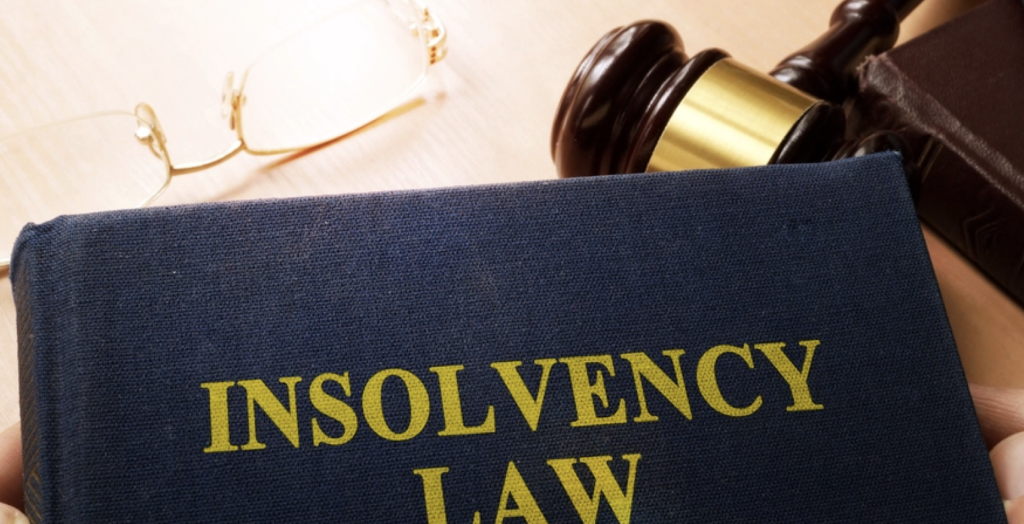Our Insolvency Practitioner Diaries
Our Insolvency Practitioner Diaries
Blog Article
Some Of Insolvency Practitioner
Table of ContentsThe Facts About Insolvency Practitioner RevealedIndicators on Insolvency Practitioner You Should KnowHow Insolvency Practitioner can Save You Time, Stress, and Money.See This Report about Insolvency PractitionerThe Best Strategy To Use For Insolvency PractitionerInsolvency Practitioner for BeginnersThe Definitive Guide to Insolvency Practitioner
Bankruptcy is when responsibilities are higher than the value of the firm, or when a borrower can not pay the debts they owe. A company can become financially troubled as a result of a number of scenarios that cause poor capital. When faced with insolvency, an organization or person can contact creditors straight and restructure financial obligations to pay them off.Bankruptcy can bring about bankruptcy process, in which legal action will certainly be taken versus the insolvent person or entity, and assets may be sold off to repay outstanding financial debts. Organization proprietors may call financial institutions straight and restructure financial obligations into more manageable installations. Financial institutions are generally open to this technique due to the fact that they intend to be settled and stay clear of losses, also if the payment gets on a delayed timetable.
All About Insolvency Practitioner
The proprietor develops a proposal outlining how the financial debt may be reorganized utilizing cost decreases or other prepare for support. The proposition shows lenders exactly how business may generate enough capital for profitable procedures while paying its financial debts. Generally, a forgiven financial obligation may be thought about income by the Irs (IRS).

Indicators on Insolvency Practitioner You Should Know
When procedures cease, so does the business's income (Insolvency Practitioner). Some business end up being insolvent since their products or solutions don't develop to fit customers' transforming requirements.
Costs go beyond earnings and costs stay overdue. Cash-flow bankruptcy occurs when a firm has the possessions to cover their debts but they are in the wrong type, such as actual estate instead of fluid funds. Balance-sheet bankruptcy, on the other hand, indicates an absence of assets in any type of form to cover financial obligations.
The IRS states that an individual is bankrupt when the overall obligations exceed total possessions. A bankruptcy, on the various other hand, is a real court order that depicts exactly how a financially troubled individual or organization will repay their financial institutions, or just how they will sell their possessions in order to make the repayments.
Some Known Questions About Insolvency Practitioner.

Debt consolidation is when you integrate numerous lendings right into one brand-new lending, often to accomplish much better terms. Insolvency is not the like personal bankruptcy, although a business that has become financially troubled might apply for bankruptcy. Bankruptcy is the state of not being able to pay your responsibilities while bankruptcy is a legal procedure to discharge your financial debts.
Comprehending the factors that can bring about bankruptcy, such as overspending, can help you stop bankruptcy and its consequences.
Not known Facts About Insolvency Practitioner
It is popular that directors and police officers of companies (and supervisors of minimal liability companies) owe fiduciary duties to their organizations and their investors (or members). These fiduciary responsibilities are defined by state statutes and, though there are resource variants from state to state, they usually include a responsibility of loyalty and a task of care.
The obligation of treatment needs supervisors and officers to work out diligence, to make enlightened decisions, and to act in good belief to make sure that their activities remain in the most effective interest of the firm. Though past the scope of this conversation, some states allow these responsibilities to be limited either by so keeping in mind in the organizational papers or abiding by other requirements.
Some Ideas on Insolvency Practitioner You Should Know
Many states specify bankruptcy in two ways( 1) when a business's liabilities come to be above the sum of its possessions or (2) when the business becomes unable to pay its financial debts as they become dueand accept both interpretations (Insolvency Practitioner). The shift in duties takes place due to the fact that when a company is bankrupt, there is no value in the business past that owed to the firm's lenders to ensure that the equity owners no more have an economic stake in the firm
Take care concerning providing investors favoritism at the cost of financial institutions (e.g., licensing and funding a returns or a supply redemption). Beware concerning favoritism between courses of investors. Clear up efforts to discover all the truths before taking a certain strategy; directors must genuinely believe that any kind of choices made are in the very best interests of the corporation in its entirety (i.e., decisions will certainly be reviewed in knowledge in light of the effect of such activities on the firm).
In any check it out insolvency or insolvency case, repayments made to particular creditors at the expenditure of other lenders can be clawed back, especially if there is some link between the company and the lender. Think about suggesting at a yearly investor conference (or any type of various other meeting of stockholders) a resolution verifying that all previous service choices and activities taken by the directors and policemans of the firm were absorbed excellent faith after an exercise of practical care.
Insolvency Practitioner Fundamentals Explained
Totally reveal any type of personal or organization connections with events beyond of purchases entailing the corporation to stay clear of the look of a conflict of rate of interest. In examining prospective fund raising purchases or a sale of assets of the troubled firm, realize that these purchases might top article be inspected later on due to any type of subsequent development of supervisors' fiduciary duties to include creditors.
Report this page